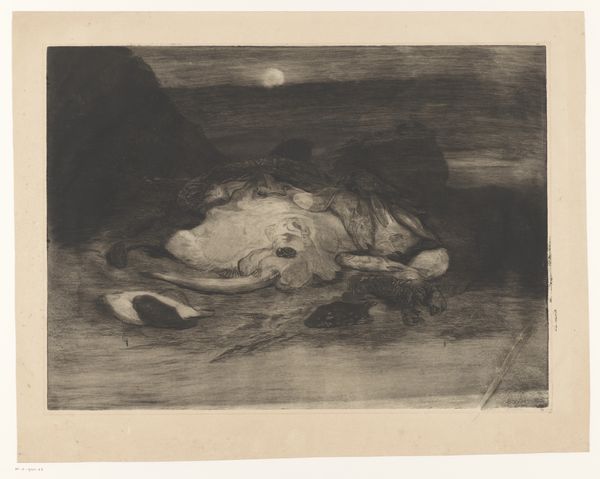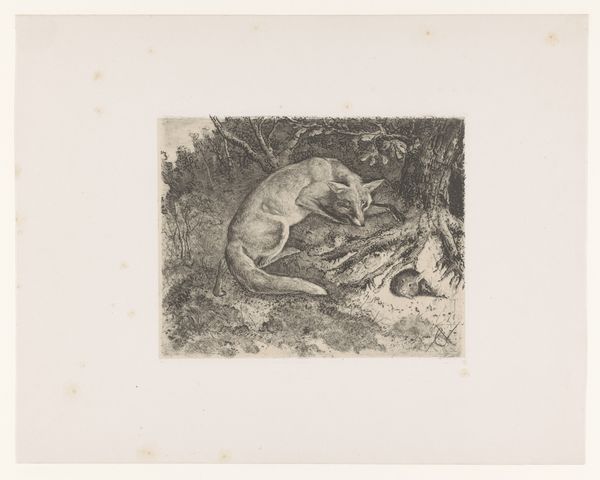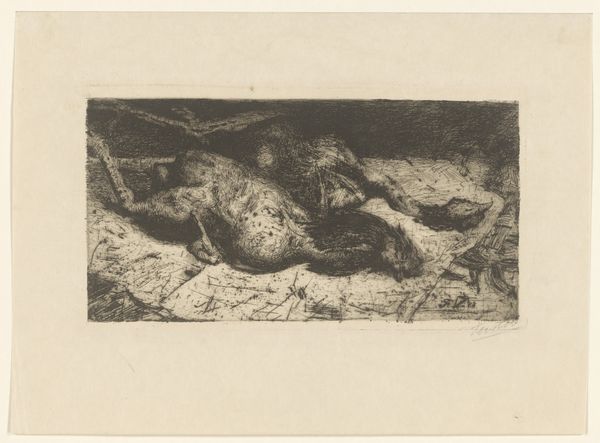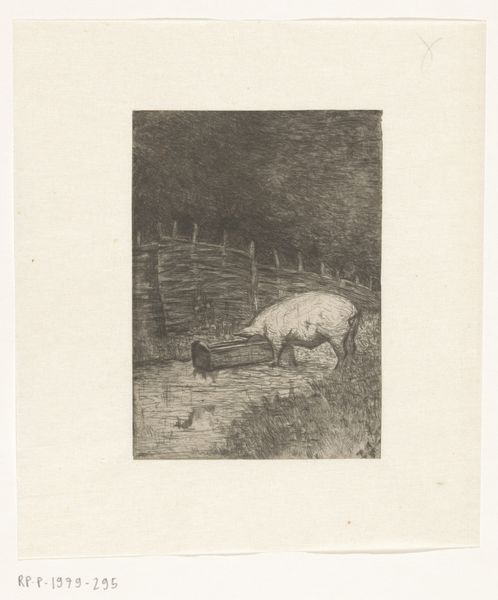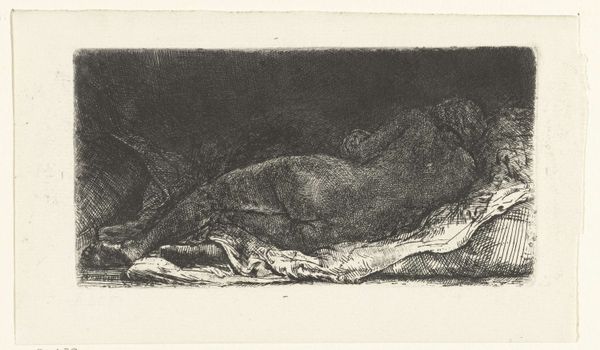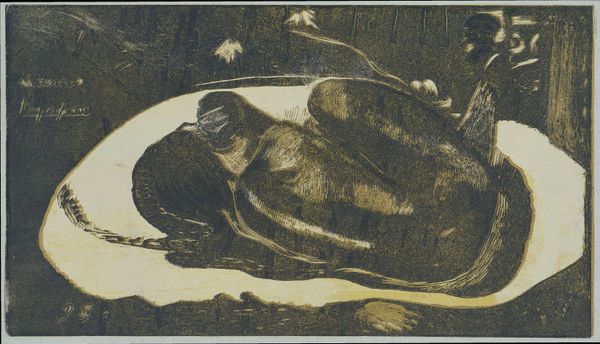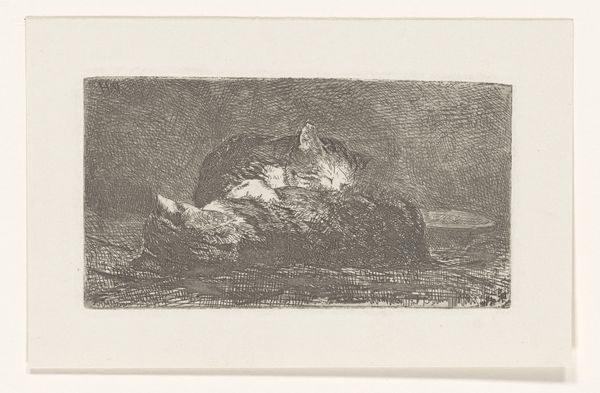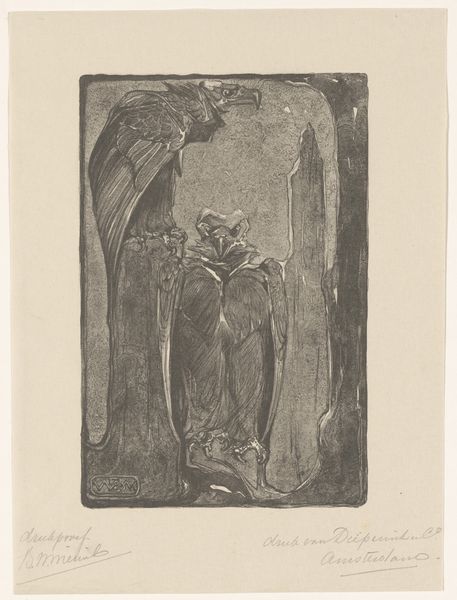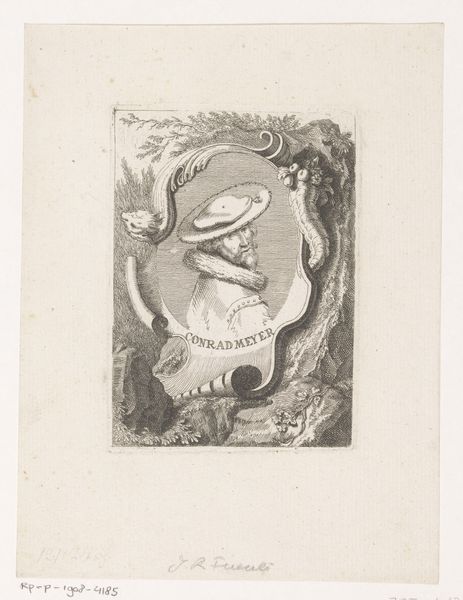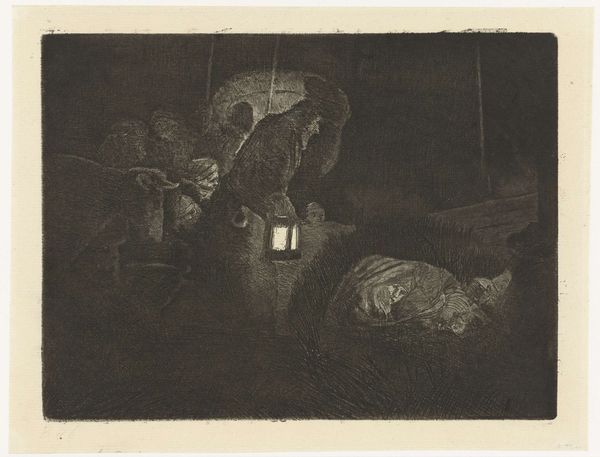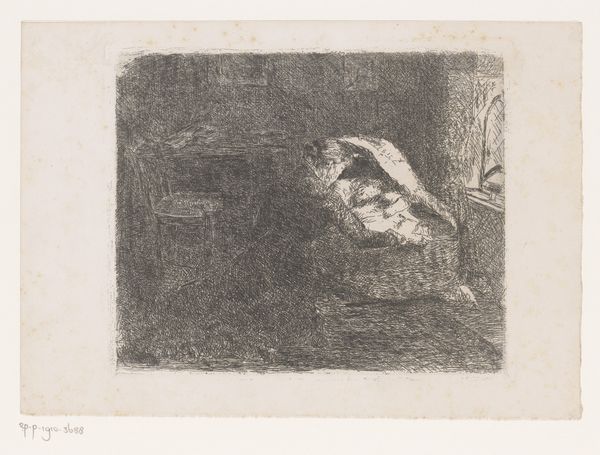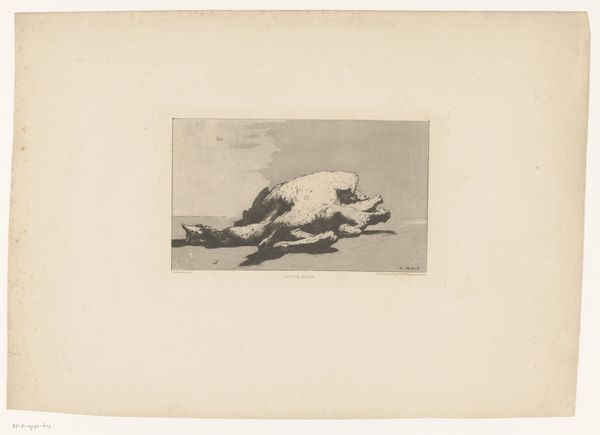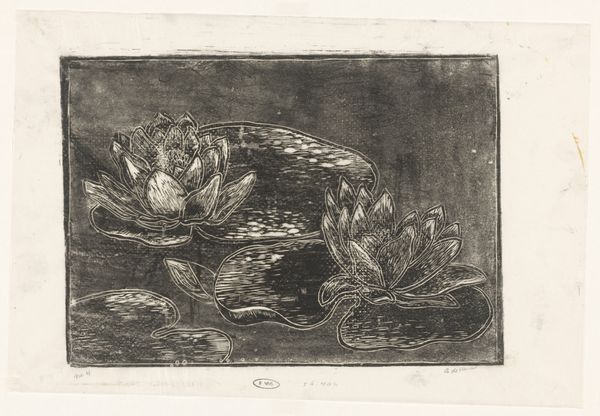
aquatint, print, etching
#
aquatint
#
toned paper
#
dutch-golden-age
# print
#
etching
#
old engraving style
#
realism
Dimensions: height 242 mm, width 177 mm
Copyright: Rijks Museum: Open Domain
Curator: This is "Vissen en waterplanten," or "Fish and Aquatic Plants," an aquatint and etching by Willem Witsen, created sometime between 1883 and 1909. Editor: It’s… striking. A somber piece. The monochromatic tones really bring out a sense of melancholy, or maybe even something more sinister lurking beneath the surface of the water. Curator: Witsen, connected to the Dutch literary movement of the 1880s and 90s, often used subdued tones to explore themes of isolation and the transient nature of life. The choice of aquatint, combined with etching, allowed him to build depth and atmosphere that enhances that mood. Editor: I’m really drawn to the way Witsen uses light and shadow to give volume to these creatures. The contrast emphasizes their textures: the rough scales, the slippery smoothness suggested by the skin, even the minute ridges along the fish's fins. These details celebrate his craft and skill. What's fascinating is the relationship between representation and materiality. The production—the copperplate, the acid bath, the physical labor involved—that all fades away for a modern viewer to simply see "fish." Curator: Precisely. Consider the social context of Witsen's work within a rapidly industrializing Dutch society. The deliberate return to older printmaking techniques might be read as a reaction to the increasing mechanization and mass production, suggesting a critique of those new modes. But there could also be links to a social narrative reflecting ideas around immigration at this time in Europe. Editor: It’s hard to ignore how the positioning of the fish draws you in. Are they trapped? Are we intruding into their space? The dark surrounding ink creates this sense of claustrophobia, so you’re immediately contemplating a feeling. Curator: Absolutely. The composition forces us to contemplate our relationship to nature. It reminds us, ultimately, of our own fleeting existence. Editor: Thinking about process, it highlights the power of printmaking to make images and narratives accessible and widely distributed. But its artistic labor shouldn't be forgotten. Curator: Ultimately, Witsen gives us a deceptively simple composition with many layers, allowing for a broad spectrum of historical, cultural, and material interpretations. Editor: Agreed. "Fish and Aquatic Plants" demonstrates how deeply art can embed questions about ourselves, society, and the world around us.
Comments
No comments
Be the first to comment and join the conversation on the ultimate creative platform.
